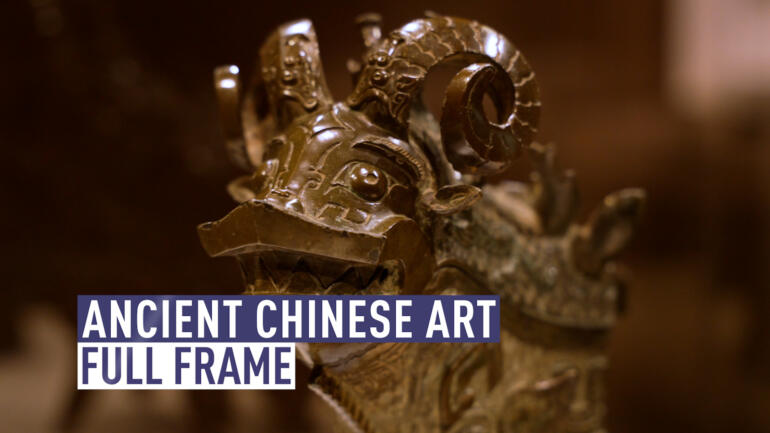When archaeologists started excavations in Anyang, China in the 1920s, they found artifacts that had survived thousands of years buried in the ground. They included bronze pots, clay jars and jade jewelry. They also discovered the early stages of the Chinese writing system. A recent exhibition in Washington, D.C. displayed these findings.
“I really always have in my mind two audiences. There’s the local American audience, and in many ways I might be introducing a new Chinese topic to an American audience and hopefully contributing to the relationship between Chinese and American people. But I’m also thinking about Chinese audiences … I’m sensitive to the Chinese cultural point of view,” said Keith Wilson, curator at Smithsonian’s National Museum of Asian Art.
The exhibition gives a glimpse into what life was like in ancient Anyang.
“One thing about Chinese material culture is that it’s all primarily functional objects. They’re made for use…We appreciate them as art objects, but they were very important objects for particular usages in antiquity,” Wilson said.
The Anyang exhibition coincides with the museum’s 100th anniversary. “I thought that shedding light on this site and the way that it brought Chinese institutions and American institutions together for scholarly collaboration was kind of an important message for today, showing that over the years, there have been these great opportunities and warm relations between colleagues working on important projects together,” Wilson said.
Inside the world of an art conservator
Grace Jan is a Chinese painting conservator at the Smithsonian’s National Museum of Asian Art where she cares for the museum’s Chinese painting and calligraphy collection. She invites our cameras into the conservation lab, where the meticulous work
Jan has spent time training and studying conservation in Beijing. She was part of a project with both Chinese and Western conservators at the Beijing Palace Museum to reinstall ceiling paintings. But the scale of the works proved to be a challenge.
“The Chinese painting conservators came up with this idea of unrolling it onto the ceiling like a hand scroll…so I think it was really interesting to hear them kind of dialog back and forth about the best way,” Jan said. “In the end, they did kind of unroll these large paintings up onto the ceiling, and a paste was applied in a certain fashion that was actually suggested by the western conservator. And I loved that dialogue.”
Bringing ancient art into modern times
China’s Dunhuang Academy takes care of the Mogao Grottoes, a UNESCO World Heritage Site in Northwest China. They’ve developed a new project to gather, organize and showcase art online, helping to keep traditional Chinese culture alive.
 CGTN America
CGTN America
